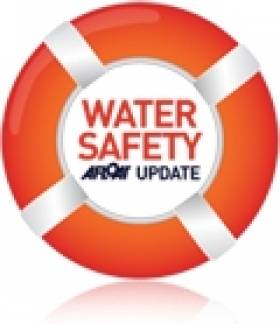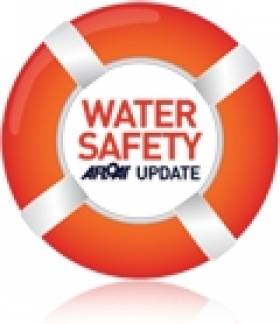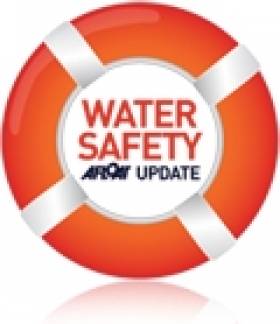Displaying items by tag: drowning
#safetyonthewater – Irish Water Safety (IWS) has appealed to the public to stay vigilant around water and not to become another drowning statistic. This appeal comes in the wake of IWS drowning statistics for 2013 which recorded 91 drownings, the lowest for 78 years.
Following a particularly hot two weeks in July 2013 during which thirteen tragically drowned, IWS noted a marked decrease in the number of tragedies during the rest of the summer period as the public adjusted their behaviours and attitudes to staying safe. This resulted in an overall total drowning figure of 91 for 2013, the lowest since 1936 when 73 people drowned.
Males were particularly at risk, accounting for 75% of drownings in 2013. Half of all those who drowned were adults aged 30-59. An extract from Irish Water Safety's 2013 Annual Report notes that the highest figure recorded in any one year to date is 235 in 1983. There was an average of 135 drownings each year in the decade to 2013.
Extracts from Irish Water Safety's analysis reveals that*:
60% were accidents, 20% suicides and 20% undetermined (55,19,17)
53% of drownings were aged 30-59 (48); 16% of drownings were aged under 29 (16)
75% of all drownings were male (69)
60% of total male & female drownings were accidental (42 of 69 & 13 of 22)
14% of female drownings were suicide (3); 23% of male drownings were suicide (16)
In the 1970's, we averaged 91 accidental drownings each year. We ended the 00's averaging 55. In the decade to 2013, the figure dropped to 51.
In the 1980's we averaged 207 total drownings each year. We ended the 00's averaging 150. In the decade to 2013, the figure dropped to 135.
Complacency is not an option for anybody as the statistics frighteningly reveal. Although 75% of total accidental drownings were male, the adage 'boys will be boys' is muted by the fact that the vast majority of drownings were not boys at all but grown men - 53% aged 30-59, compared to 16% aged under 29."
It only takes seconds for tragedy to strike and this can so easily be avoided if people take responsibility for their own safety by taking note of the following in advance of any trip:
Swim at Lifeguarded waterways - http://www.iws.ie/bathing-areas-page.html
If there is no Lifeguarded waterway nearby then swim at a recognized, traditional bathing area
Swim within your depth - stay within your depth;
Use local knowledge to determine local hazards and safest areas to swim;
Ensure that ringbuoys are present;
Make sure that the edges are shallow shelving so that you can safely and easily enter and exit;
Only drink alcohol after your aquatic activity has ended. Stay Away From The Edge after you consume alcohol.
Never use inflatable toys at beaches, rivers or lakes.
Friday the 13th Full Moon Water Safety Warning
#watersafety – Hot weather often lulls people into a false sense of security that will place lives at risk this weekend at beaches, rivers and lakes. Knowing the dangers will reduce the chance of drowning tragedies that average five per fortnight.
Rip-Currents - the tidal influence of a full moon on Friday 13th June will cause stronger than normal rip currents this weekend. It will be the first outdoor swim of the year for many people unaware of the dangers of swimming in open water. To escape a rip current, never swim against this narrow current of water flowing away from a beach. Instead, swim parallel to shore, out of the narrow current, then swim back to shore at an angle.
Lifeguards - swim at the lifeguarded waterways listed at www.iws.ie.
Lifejackets - When boating, wear a correctly fitting Lifejacket with a crotch strap.
Stranding - the tidal influence of a full moon on Friday will expose greater areas of beach, increasing the risk that walkers will be stranded by a fast incoming tide.
Supervision - Children are curious about water therefore it is critical that adults supervise children at all times.
Drowning Tragedy In South Dublin Reservoir
#Drowning - Emergency services have recovered a body at a reservoir in Bohernabreena after a 16-year-old boy went missing while swimming with friends yesterday (Tuesday 15 April), according to TheJournal.ie.
The teenager - named by the Irish Mirror as Shane Boggans - was reportedly snagged in pipe fittings below the surface of the reservoir, where swimming is prohibited.
The Irish Mirror has more on the story HERE.
Probe Into Death Of Galway River Bridge Jumper
#Drowning - BreakingNews.ie reports that the Garda Ombudsman is investigating the death of a man whose body was recovered from the River Corrib in Galway city some time after he was stopped at a Garda traffic checkpoint.
The Irish Coast Guard and Galway RNLI were involved in a major search and rescue operation last night after the man was seen jumping into the river from O’Brien’s Bridge around 6.30pm. His body was found at Lough Atalia an hour later.
Annual UK Drowning Figures Revealed Ahead of RoSPA Water Safety Seminar
#watersafety – The number of people accidentally drowning in the UK has dropped by nearly nine per cent in a year to 371 deaths in 2012, latest figures reveal.
More than half of deaths from accidents or natural causes continued to be in inland waters, such as rivers, lakes and reservoirs(203), while drowning at the coast or in a harbour, dock, marina or port accounted for a third (124), according to new data from the National Water Safety Forum (NWSF).
The NWSF's Water Incident Database (WAID), which breaks down drownings by activity, age and location type, reveals that more than a fifth of fatalities (84) were in the 50-65 age group, many while involved in activities such as sub aqua diving, swimming and angling.
Meanwhile, the under-19s accounted for 12 per cent of deaths (43), of which more than half were teenagers aged 15 to 19 (25) who predominantly got into difficulties in rivers or at the coast or beach. In the youngest age bracket of four and under, seven children drowned, two while in a bath.
Figures are revealed ahead of the National Water Safety Seminar, hosted by The Royal Society for the Prevention of Accidents (RoSPA), which takes place at The Lowry, Salford Quays, on Thursday (October 17).
David Walker, a member of the NWSF and RoSPA's leisure safety manager, said: "While the figures for 2012 are encouraging, we mustn't get complacent, especially given the prolonged heatwave we had this year.
"There's much more that could be done to save lives and improve water safety. That's why the main focus of the National Water Safety Seminar will be to create a consensus for a national drowning prevention strategy in order to further reduce the number of deaths."
Professionals covering sea, beach, inland, swimming pool and watersports safety including from the Royal Life Saving Society UK, the Royal National Lifeboat Institution, and the Amateur Swimming Association will use the seminar to discuss how best to tackle key issues, such as increasing the number of schoolchildren who can swim the minimum requirement of 25m.
In 2011, 407 people drowned from accidents or natural causes in the UK, with 219 of these (54 per cent) at inland waters. In this year, water-related deaths for children and young people up to the age of 19 reached 47 and nearly half of these - 22 deaths - were in the 15 to 19 age group, and predominantly in a river or lake.
Swimmer Drowns Off Achill Island
#NewsUpdate - The Irish Times is reporting that a women has drowned while swimming off Achill Island yesterday afternoon (Thursday 10 October).
Local coastguard members responded to an emergency call just after 3pm yesterday after the woman, who was swimming with a group at the time, got into difficulty.
Her body was recovered from the water to Purteen Pier in Achill, Co Mayo, where she was pronounced dead at the scene by a local doctor.
Search For Missing Person As Body Recovered From Avoca River
#Drowning - The body of a man has been recovered from the Avoca River in Arklow, Co Wicklow while the search continues for a second missing person, according to The Irish Times.
It's being reported that one other person was rescued from the river near the Bridgewater Shopping Centre after the alarm was raised in the early hours of this morning (10 September).
Two others thought to have entered the water were able to get out themselves.
The Irish Times has more on the story HERE.
Man Drowns In Shannon At Athlone
#Drowning - The Irish Times reports that the body of a man who fell into the River Shannon while on a night out in Athlone has been recovered.
The victim, in his 50s, was with friends when he apparently slipped off the wall of Town Bridge late last night (7 September). A postmortem is due and Gardaí are investigating the incident.
Boy Drowns In 'Freak Accident' On Waterford Beach
#Drowning - TheJournal.ie is reporting that a two-year-old boy has drowned in a "freak accident" at a Waterford beach yesterday (22 August).
The boy was at Boatstrand near Bunmahon, between Tramore and Dungarvan, with family around 7pm yesterday evening when he went to play away from the group and got into difficulty close to the shore.
Gardaí are investigating the incident and have not as yet released further details.
The tragedy brings to mind last month's shocking series of drownings around Ireland during the recent heatwave.
Four More Drownings Bring Renewed Water Safety Appeal
#WaterSafety - Four more people have drowned in separate incidents around Ireland as the heatwave continues.
As RTÉ News reports, a 24-year-old man died while swimming in the sea near Ardara in Co Donegal yesterday afternoon (20 July).
Later, the body of a second victim was recovered from the Shrule River in Newtownstewart, Co Tyrone after getting into difficulty.
A third man in his 60s is was drowned after failing to return from a swim in a quarry near Carrick-on-Suir. His body was recovered earlier today.
The tragedies follow news of a 19-year-old who drowned while swimming with friends in Lough Leane in Killarney on Friday evening (19 July).
And a woman in her 30s was lucky to be rescued after getting into difficulty swimming in the River Nore near Kilkenny. She is currently in a serious but stable condition in hospital.
Irish Water Safety have renewed their appeal for the public to take extra care when taking to the water during this extraordinary hot weather that had already claimed seven lives as of Thursday last.







































































